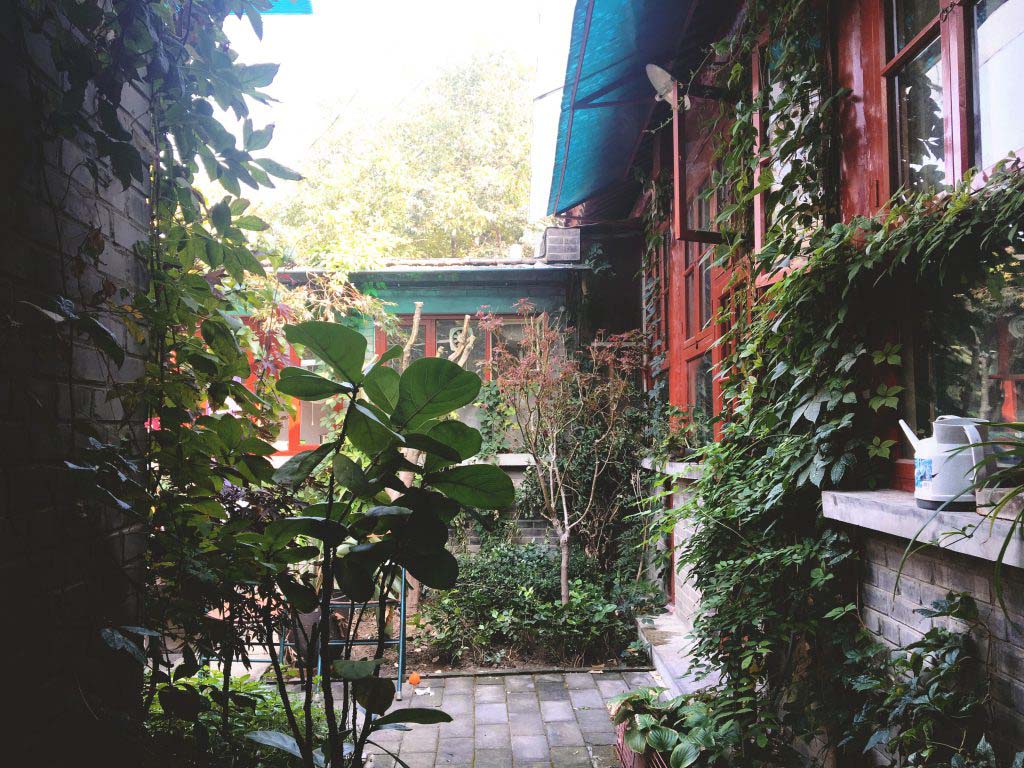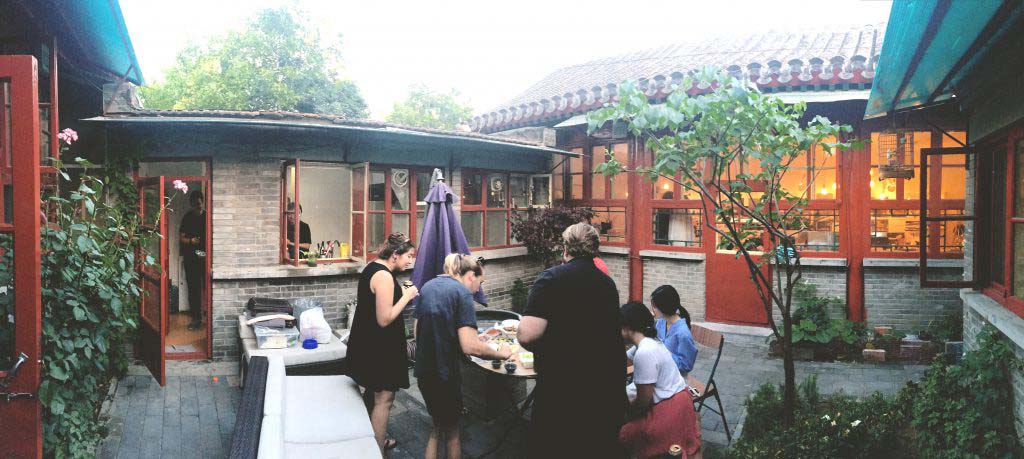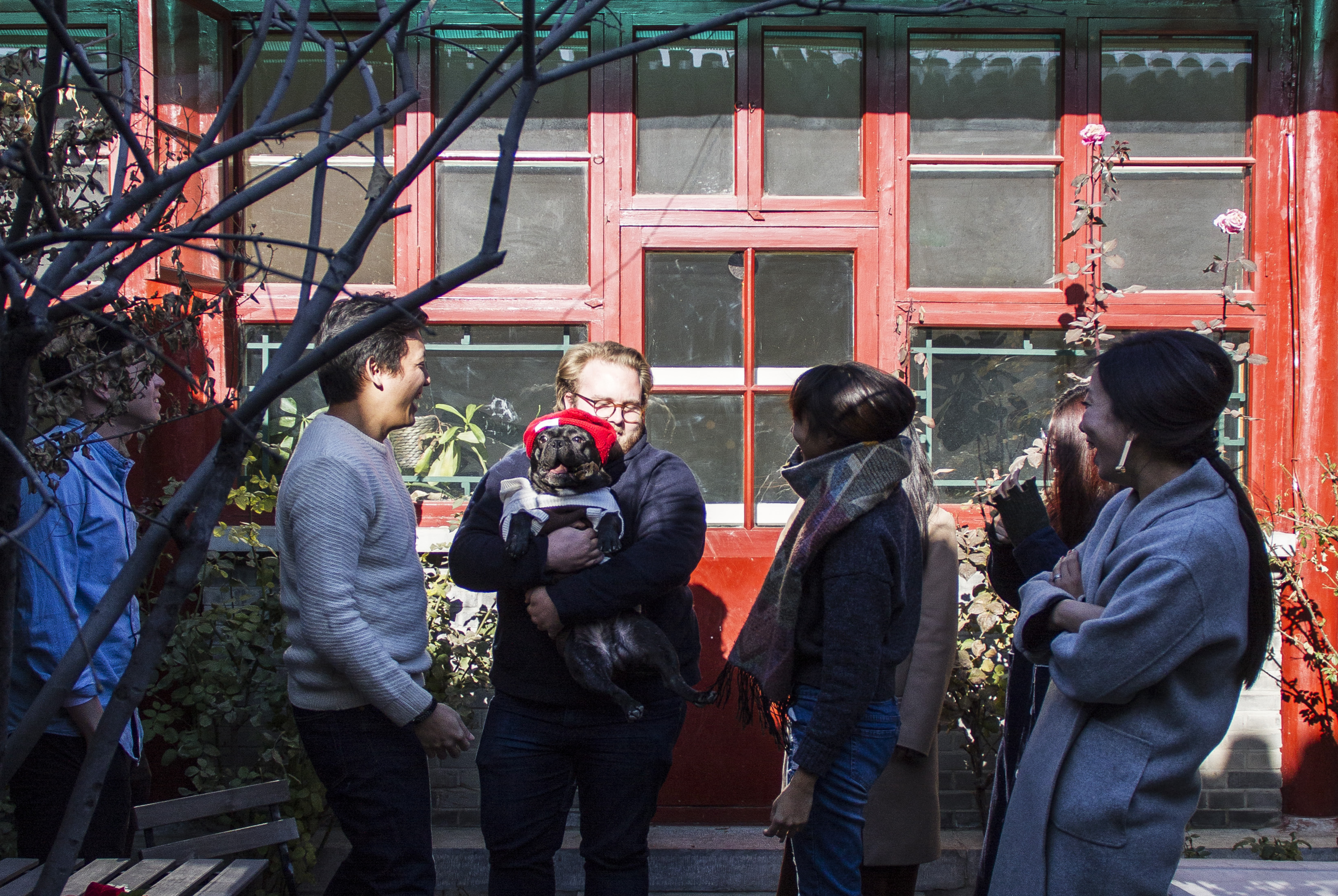Our Yard
Located in the Beixinqiao neighborhood of Beijing, we have created a modern living and working space for us as maison h. We believe that you should create space for yourself as you want to create for others, and so our space is an embodiment of what we stand for.
Historic City
The city blocks within the historic inner-city of Beijing are made up of traditional ‘hutong’ alleyways running from east to west, to access the courtyard houses, entering form the north and south. The traditional typology is the siheyuan, which is a courtyard with surrounding living spaces.
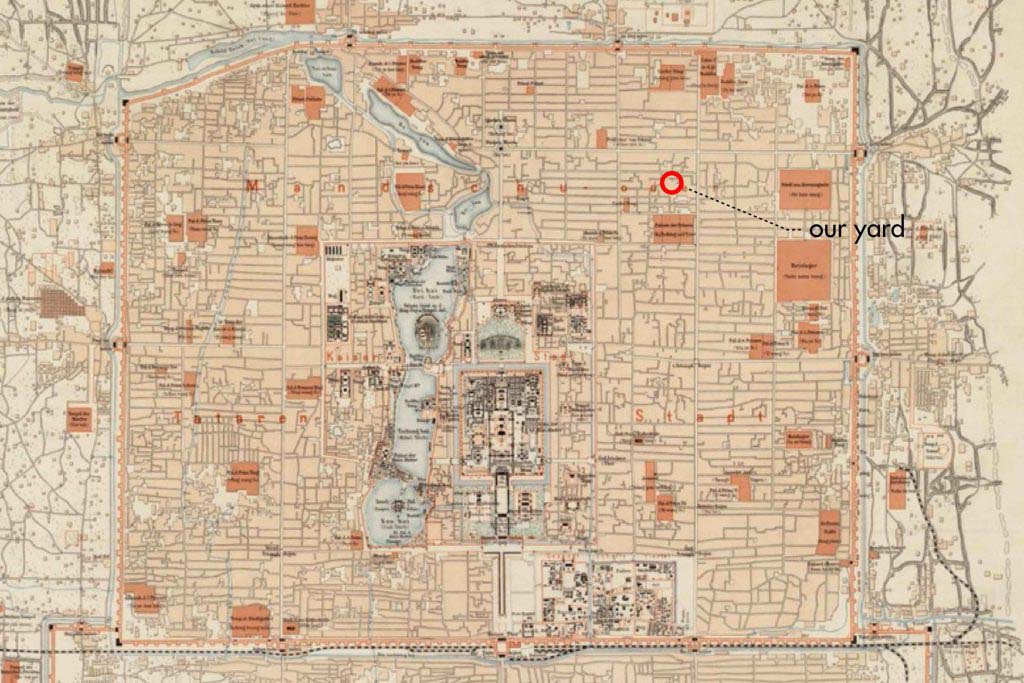
Situated in a city of 30 million people, our courtyard is an oasis from modern urban homogeneity.
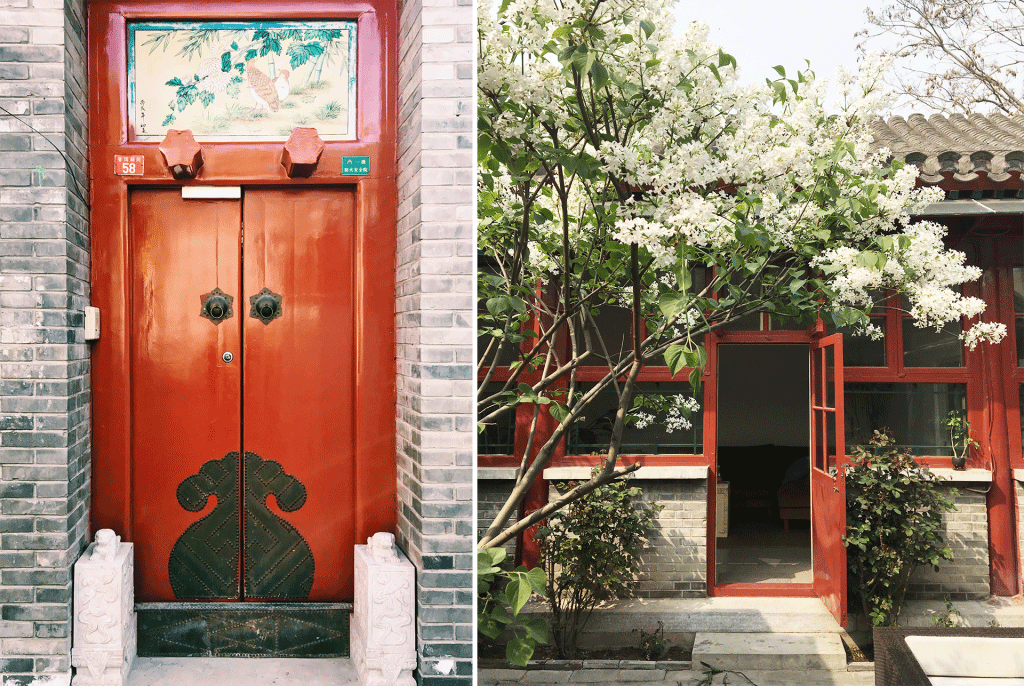
The yard front door
Unites Heaven & Earth
In the density of Beijing, the courtyard houses still offer the luxuries of privacy and access to nature. In the inner-city of Beijing, each yard has a private piece of sky, only shared with the birds.
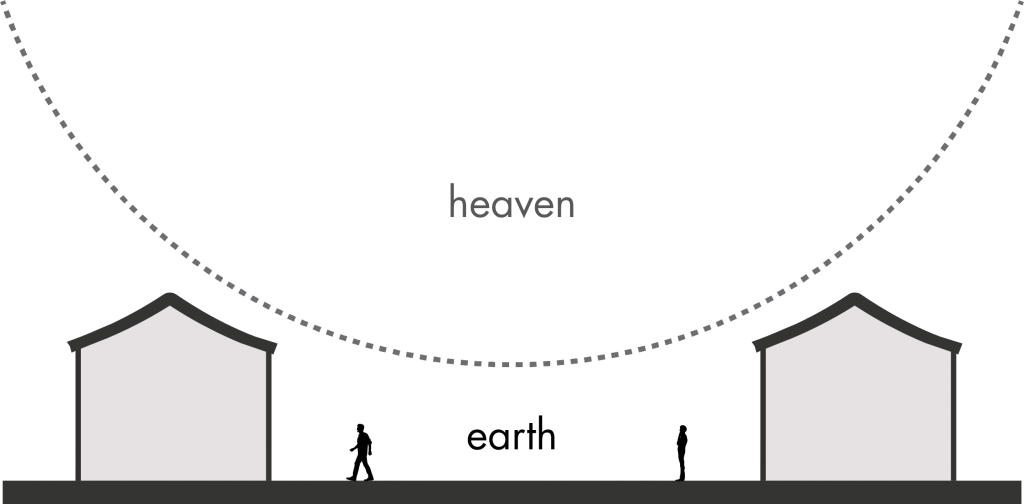

The courtyard arrangement of spaces
Chinese Conception of Space
For the Chinese, an artificially created space, such as most architecture is, is first of all cosmological and should be in harmony with the order of nature. This notion of how architecture and nature could be conceived together has been rooted in Chinese cultural history.

Bobo standing guard at the entrance
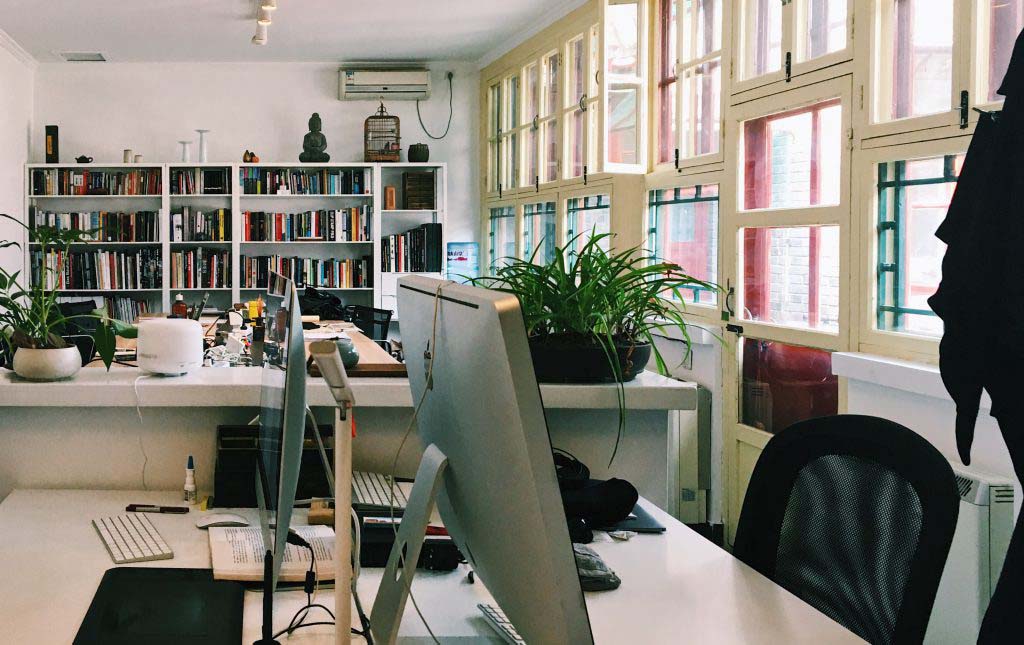
The office; light, bright and bringing nature inside
Balancing Man & Nature
In the mind of Chinese artists and scholars, the most truthful painting would thus show a harmonious system in which a balance between Man and Nature exists. We can also find this striving for a balanced world in the practice of Taiji or the application of Feng Shui principles in design and city planning.

Enjoying the summer weather with Peking duck, in the yard
In the historic city, every yard has a private piece of sky, only shared with the birds.
Modern Beijing
Unfortunately, in contemporary China, this conception has seem to got lost a bit. The previously harmonious system is now more of a giant cacophony of urban infrastructure and patch work structures, as seen in the state of the current historic city center of Beijing and its ‘traditional’ hutong alley ways.
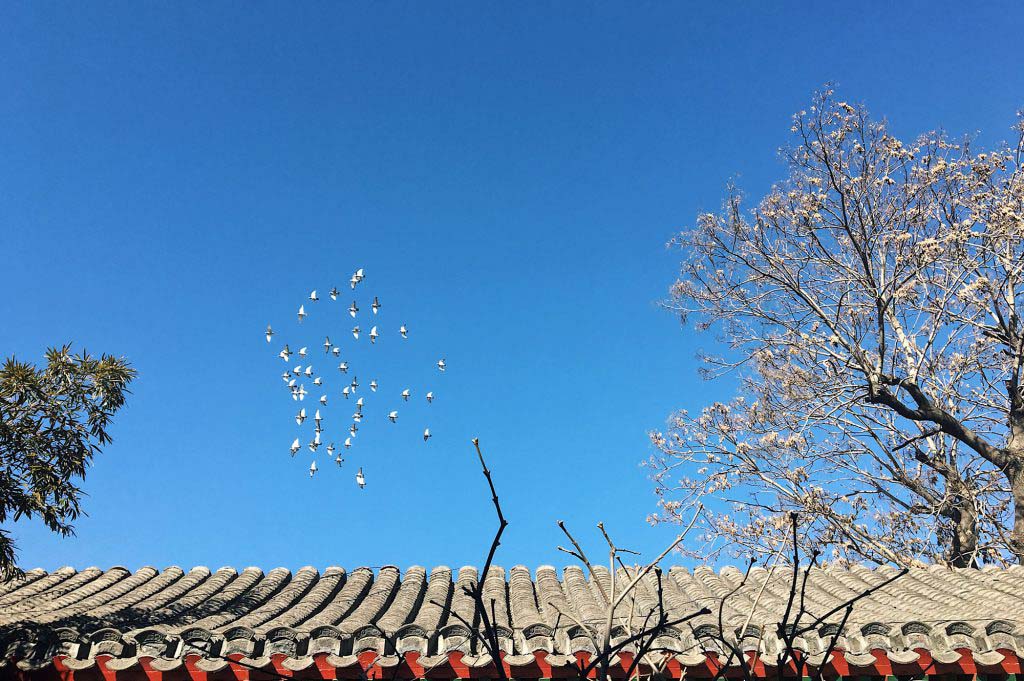
Birds fly overheard viewed from our own private piece of sky
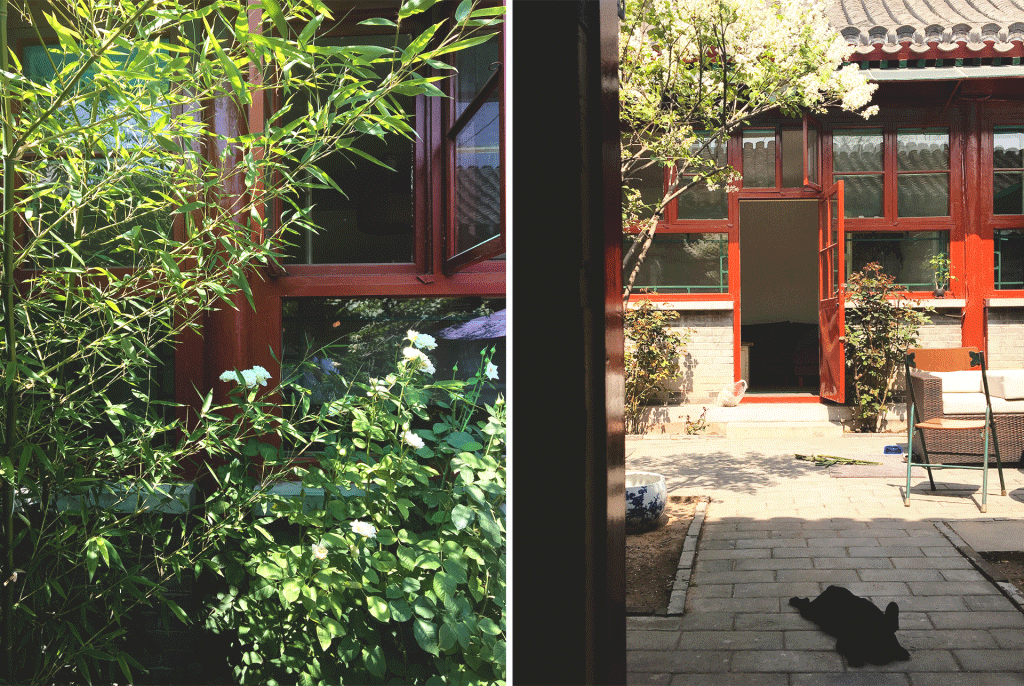
Our green inner-city oasis
Reflexive Regionalism
For us though, architecture should try to integrate its theoretical ideas with contemporary real-life conditions. We believe that every practice ought to work towards an ‘ecology’ of harmony and tranquility. What we are trying to do in this practice might be described as a reflexive regionalism. It’s more about identifying original conditions than inventing original forms or objects. It’s about combining technology, community, local materials, modern thinking and a traditional sense of identity.

The yard entrance
Inner-city Habitat
Thus, while designing part of our own little habitat, inside Beijing’s historic inner city, I tried to re-instigate part of this original conception. A little piece of nature, harmony and tranquility inside the modern urban background chaos. A small habitat in which we re-build a physical manifestation of the idealized conceptual system.
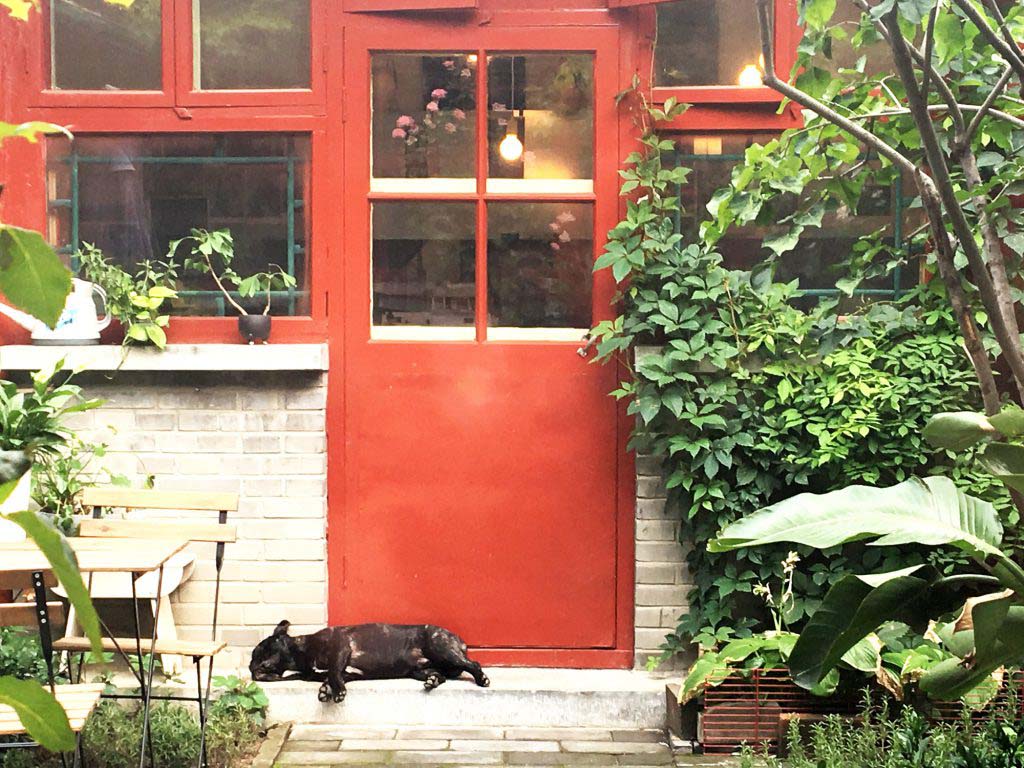
Our inner-city green oasis

Scale models coming together in the office
Representing the Natural World
To the traditional Chinese scholar, or literati, this also includes a miniature representation of the full natural world. Our house thus includes bamboo, rocks, flowing water, fish, turtles, birds and so on. In addition to the animals that come and go naturally… It provides a comfortable environment to contemplate, read, write and enjoy tea with friends and family. In the spirit of the traditional scholars.
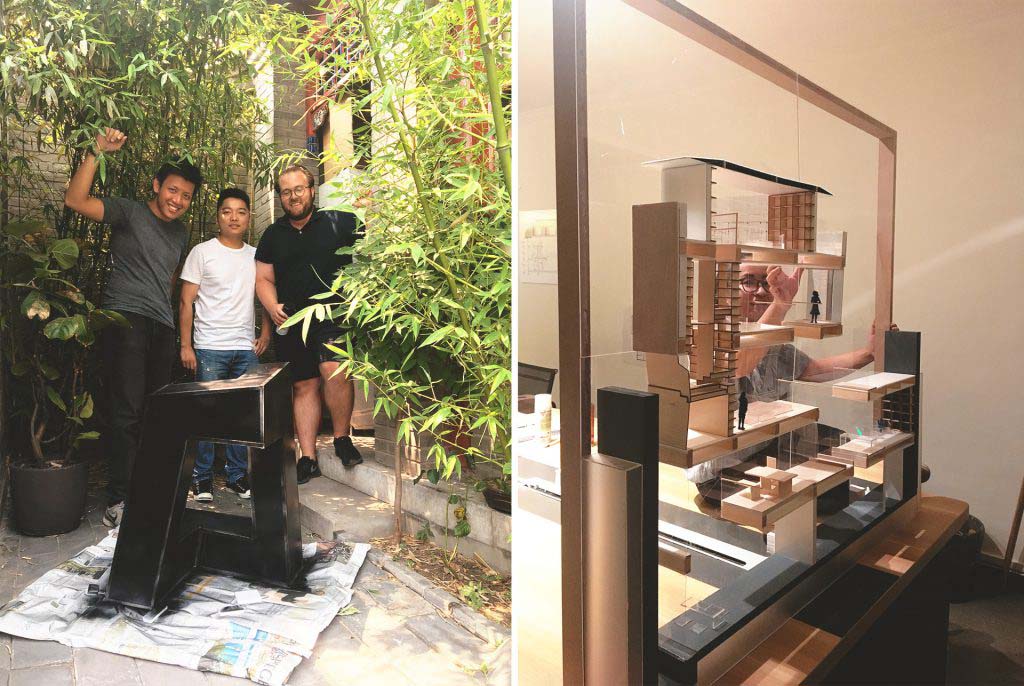
Scale models coming together in the office
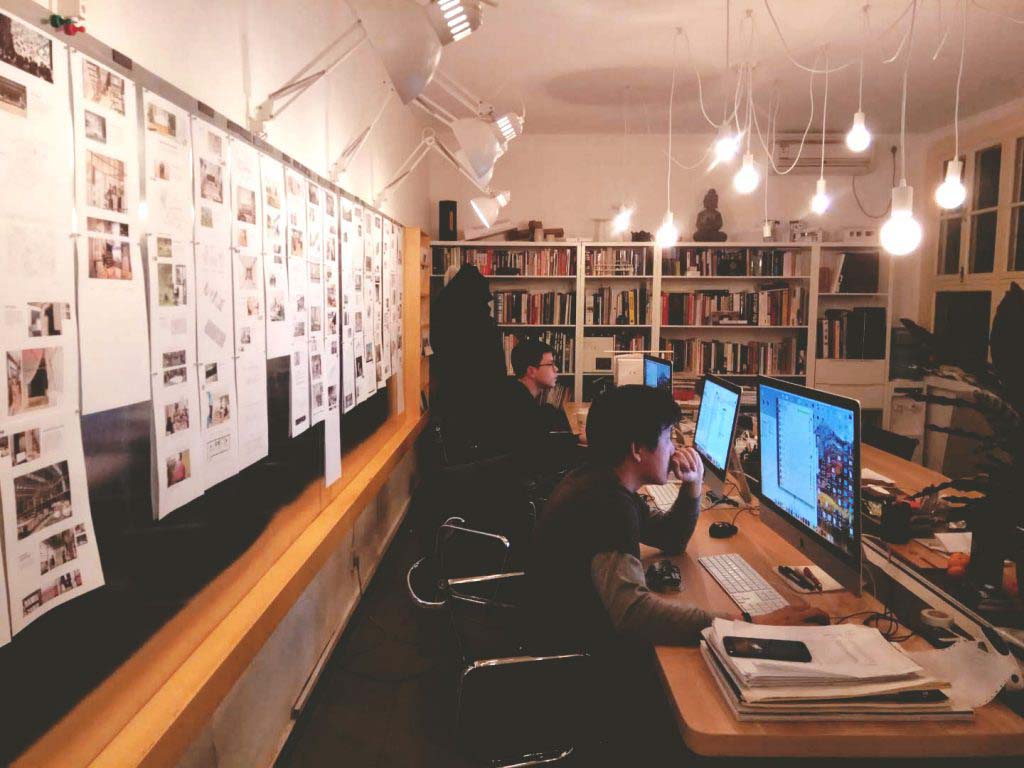
Office in the evening time
Small Rituals
The tea ceremony in itself is a small habitat, in which all elements complement the ritual of preparing tea. At night candles provide a comforting atmosphere, enjoy Beijing’s warm summer evenings.
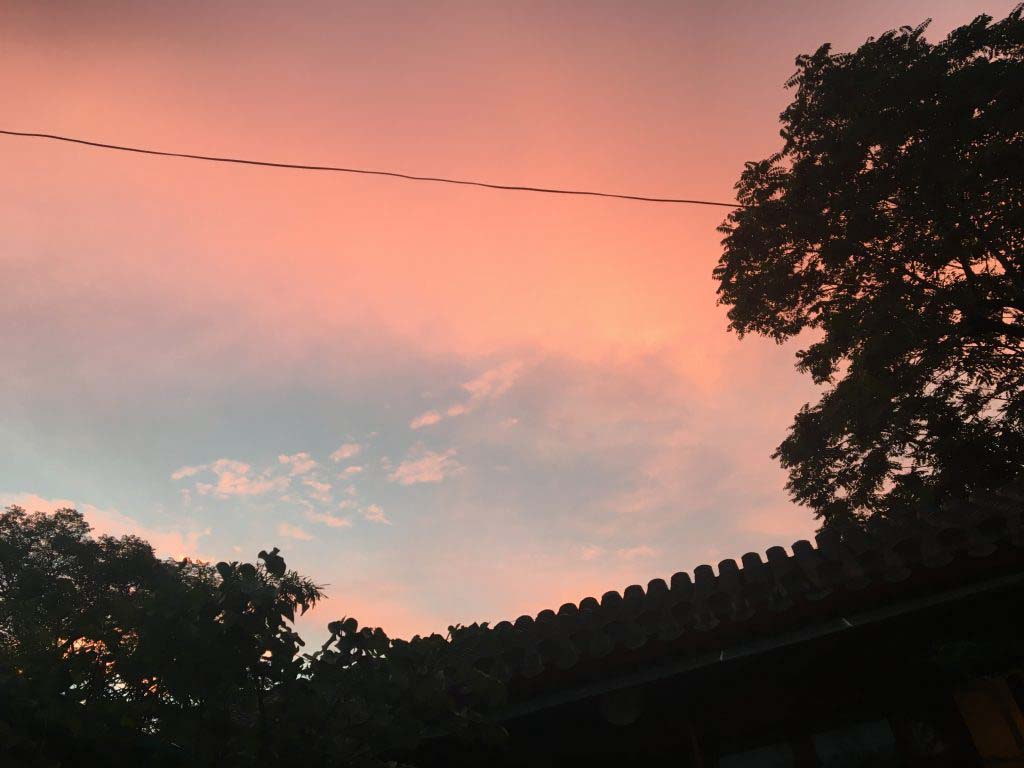
Sunset over Beijing seen from the yard
Visiting the yard.
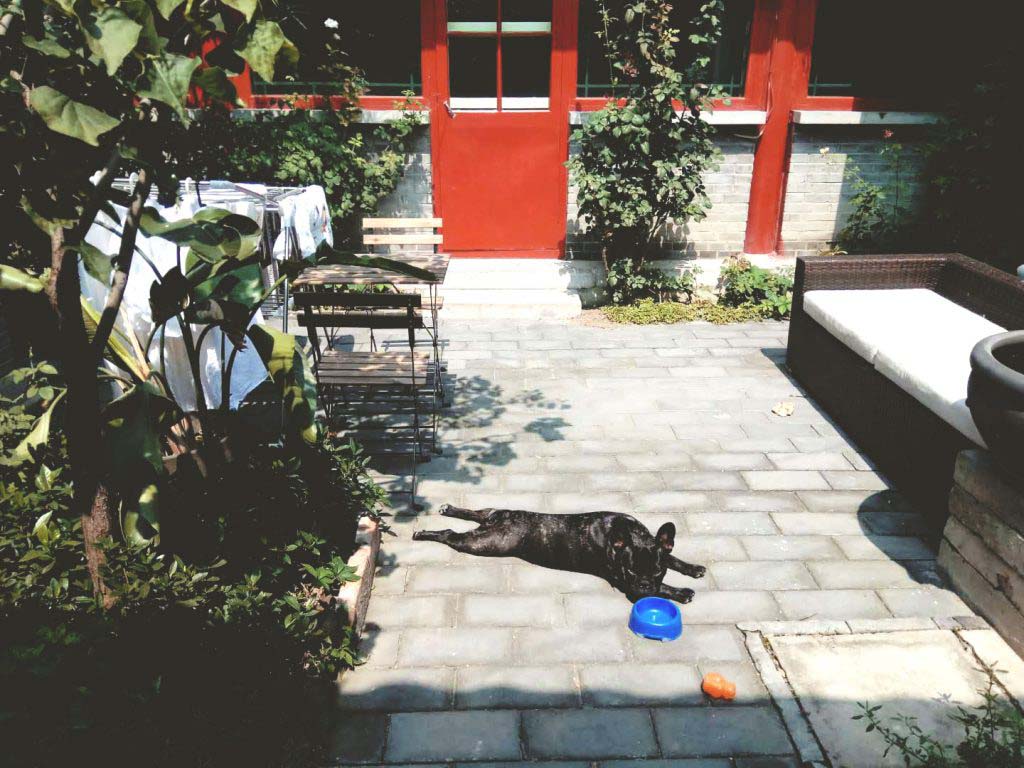
Nature as Our Support
In the process of creating this small habitat, we realized that this notion of embedding people and architecture into nature is not a mere Chinese traditional desire. For us, it symbolizes a natural, universal approach in which every person feels comfortable inside a natural habitat. A habitat that naturally enables people’s needs and behavior, and a habitat that enables nature to be our supportive environment.
